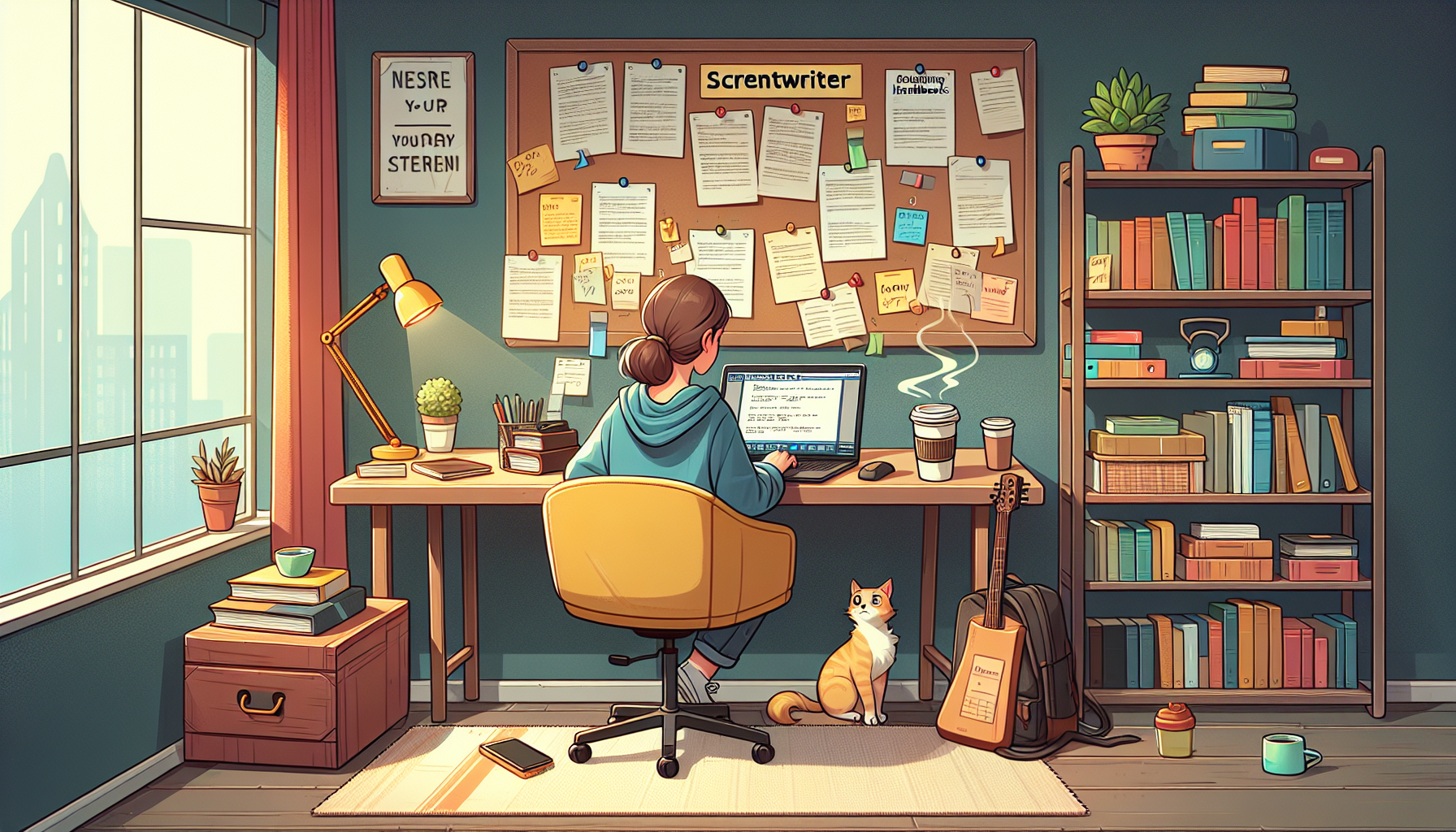
Welcome to the World of Short Film Scripts
So, you’ve decided to give the glittering world of short film scripts a whirl? Fantastic! Brace yourself for a rollercoaster ride of creativity and stress-induced caffeine binges. Crafting a short film script can be both exhilarating and exasperating, like trying to sneeze with your eyes open. But fear not, dear reader, for this guide will arm you with all the tips, tricks, and occasional necessary clichés to embark on your scriptwriting odyssey.
Conceptualizing: The Spark of Genius or Momentary Lapse of Reason?
Every great short film hinges on an intriguing concept. Unlike feature films, you don’t have the luxury of time to wind through a labyrinth of subplots. Kiss your epic eight-hour magnum opus goodbye; keep it short, sweet, and snappy. Frame your narrative around a single, powerful idea. Is it a gum-chewing contest with apocalyptic repercussions? A cat who moonlights as a detective? The sky’s the limit, provided you can boil it down into a tight little package.
Remember, your concept needs to grab the audience by the metaphorical collar and shake them. It should be interesting enough to make Netflix bingers pause “just one more episode” of their latest series addiction.
Characters: Building People Without Creeping Them Out
Let’s talk characters—that’s characterS, plural, because even Tom Hanks needed Wilson. Crafting memorable characters in a short film is a tricky business. You don’t have hours of screen time to develop them, so focus on making each character as vibrant and layered as an onion with emotional baggage.
Give them desires, flaws, dreams, and quirks. Think of characters who are relatable yet distinctive enough to leave an imprint. Nobody wants to watch another generic brooding loner unless he’s brooding for an unprecedented reason—like his pet iguana absconded with his life savings.
Plot: The One-Act Wonder
The plot is where your story actually struts its stuff. With short films, conventional three-act structures often morph into leaner forms. Think of it as a bonsai version of a feature film’s sequoia-sized plot—a beginning that captivates, a middle that engrosses, and an end that satisfies or leaves the viewer pondering life’s greatest questions. Simple, right?
Your story should move forward with the urgency of a last-minute pizza order. Cut any fluff. In a short film, each moment, shot, and line needs to earn its keep. If it doesn’t serve a purpose, it gets the axe. Be ruthless, like an editor on a deadline who just spilled coffee on their only copy.
Dialogue: Witty Banter or Post-it Note Pithy?
Ah, dialogue—a place where even seasoned writers can get hung up, tangled like earbuds in a bottomless purse. When writing dialogue for short films, every word carries weight. Authenticity is key, but brevity is your best buddy. If your character can communicate the same message with a look, do it that way. Trust in your actors’ eye-twitching prowess.
Avoid lengthy monologues that turn your film into a snooze-fest. Think more Hemingway, less Proust. And for the love of cinema, don’t get Shakespearean unless you’re sure the Bard himself would give you a thumbs-up.
Setting the Scene: Less is More but More is Also More
Sure, sprawling landscapes and intergalactic battlefields are all the rage, but in the realm of short film, practicality is your co-pilot. Choose settings that reinforce your story. A living room can be an epic battlefield of emotions. A coffee shop can serve as the stage for earth-shattering revelations. Make your locations dynamic, and remember: sometimes a closet can tell you more than an entire cityscape.
Pacing: The Rhythm of Your Narrative Jazz
Timing isn’t just for comedians or bomb squads. Your pacing determines the rhythm and ultimately the impact of your story. Start with a bang to hook your audience, maintain a steady build to keep their interest, and wrap it up before their popcorn runs out. Rapid cuts? Long takes? Match your pacing to the tone of your story—whether it’s a nimble fox trotting thriller or a slow, bluesy character study.
Edit and Polish: Shine That Script Until It Gleams
Now that you’ve got your first draft, it’s time to edit like a hawk with a red pen fetish. This part isn’t glamorous but neither is wearing unmatched socks, and it’s just as crucial. Read your script aloud, hand it to trusted (and brutally honest) friends, and rewrite, rewrite, rewrite. Scrutinize every line, every scene. Repair plotholes, sharpen dialogue, and, most importantly, ensure your story flows smoothly from start to finish.
Remember, every writer faces rejection and revision. Even J.K. Rowling had her Harry Potter manuscript rejected more than a dozen times. So do not despair! As they say, the only bad script is the one you never finish—at least, that’s what optimistic writers’ groups keep telling us.
Conclusion: Roll Credits
Congratulations! You’ve now got a usable, perhaps even brilliant, short film script. Now, all that’s left is the small matter of getting it produced, finding actors, securing funding, and selling it to some major studio. Piece of cake, right?
Go forth and script, my friend. The world of short films awaits your unique voice, your zesty originality, and, perhaps most importantly, your unyielding determination to see your ideas come to cinematic life. Cut. Print. That’s a wrap!






